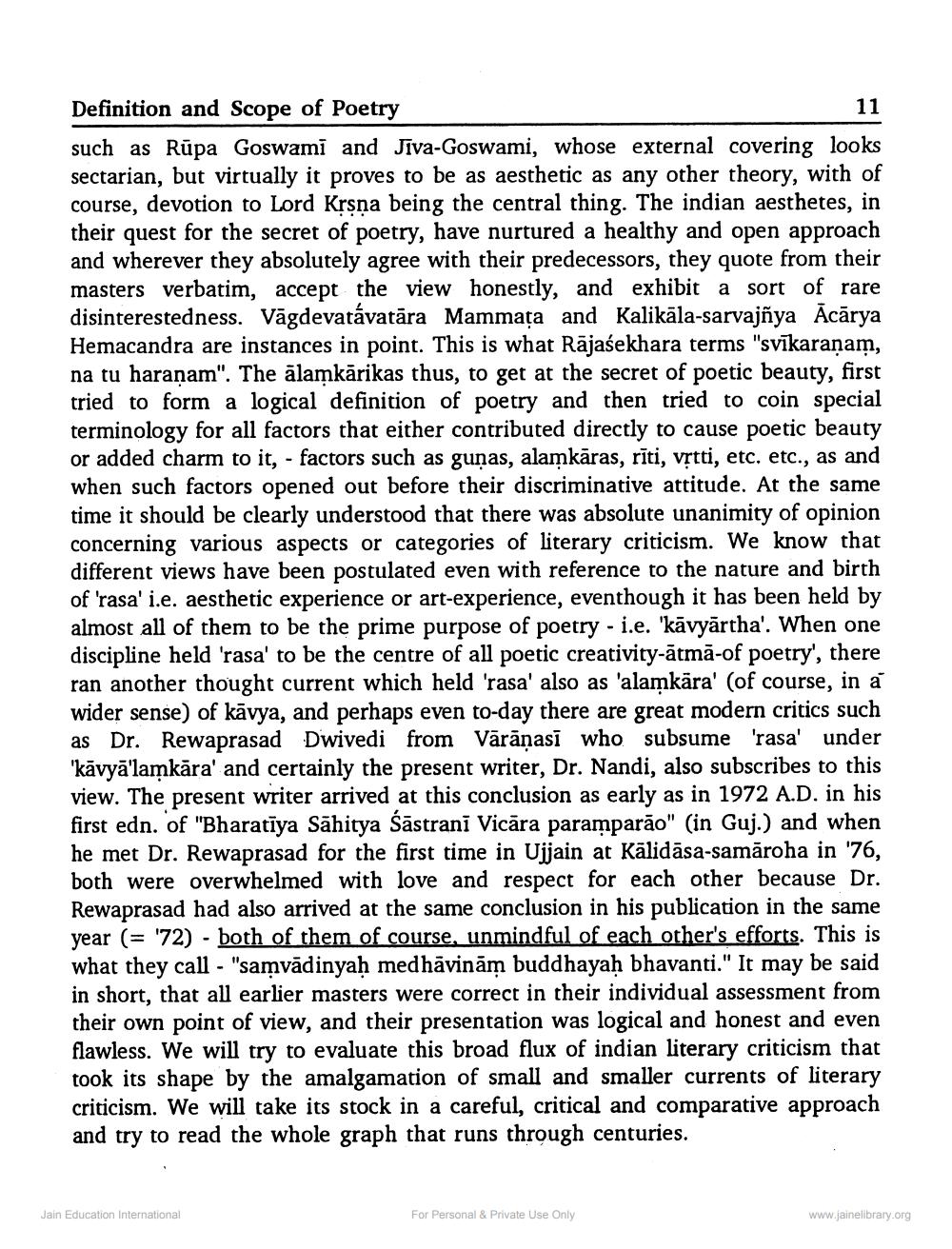________________
Definition and Scope of Poetry
11 such as Rūpa Goswami and Jiva-Goswami, whose external covering looks sectarian, but virtually it proves to be as aesthetic as any other theory, with of course, devotion to Lord Krsna being the central thing. The indian aesthetes, in their quest for the secret of poetry, have nurtured a healthy and open approach and wherever they absolutely agree with their predecessors, they quote from their masters verbatim, accept the view honestly, and exhibit a sort of rare disinterestedness. Vāgdevatávatāra Mammata and Kalikāla-sarvajñya Acārya Hemacandra are instances in point. This is what Rājasekhara terms "svīkaranam, na tu haranam". The ālamkārikas thus, to get at the secret of poetic beauty, first tried to form a logical definition of poetry and then tried to coin special terminology for all factors that either contributed directly to cause poetic beauty or added charm to it, - factors such as gunas, alamkāras, rīti, vștti, etc. etc., as and when such factors opened out before their discriminative attitude. At the same time it should be clearly understood that there was absolute unanimity of opinion concerning various aspects or categories of literary criticism. We know that different views have been postulated even with reference to the nature and birth of 'rasa' i.e. aesthetic experience or art-experience, eventhough it has been held by almost all of them to be the prime purpose of poetry - i.e. 'kāvyārtha'. When one discipline held 'rasa' to be the centre of all poetic creativity-ātmā-of poetry', there ran another thought current which held 'rasa' also as 'alamkāra' (of course, in a wider sense) of kavya, and perhaps even to-day there are great modern critics such as Dr. Rewaprasad Dwivedi from Vārānasi who subsume 'rasa' under 'kāvyā'lamkāra' and certainly the present writer, Dr. Nandi, also subscribes to this view. The present writer arrived at this conclusion as early as in 1972 A.D. in his first edn. of "Bharatiya Sahitya Sastrani Vicāra paramparāo" (in Guj.) and when he met Dr. Rewaprasad for the first time in Ujjain at Kālidāsa-samāroha in '76, both were overwhelmed with love and respect for each other because Dr. Rewaprasad had also arrived at the same conclusion in his publication in the same year (= '72) - both of them of course, unmindful of each other's efforts. This is what they call - "samvādinyah medhāvinām buddhayah bhavanti." It may be said in short, that all earlier masters were correct in their individual assessment from their own point of view, and their presentation was logical and honest and even flawless. We will try to evaluate this broad flux of indian literary criticism that took its shape by the amalgamation of small and smaller currents of literary criticism. We will take its stock in a careful, critical and comparative approach and try to read the whole graph that runs through centuries.
Jain Education International
For Personal & Private Use Only
www.jainelibrary.org




